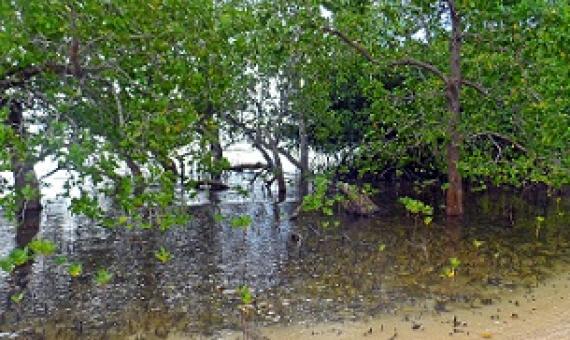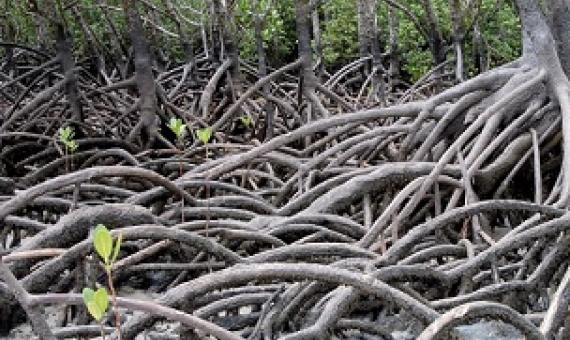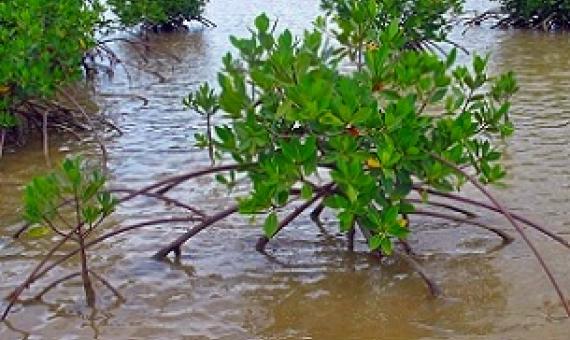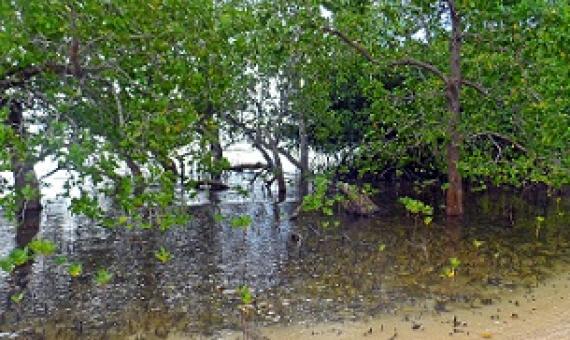Mangrove planting was initiated by the staff of Post Fiji at the Suva Foreshore yesterday while commemorating World Post Day. Minister for Infrastructure, Jone Usamate was also part of the initiative and commended the company’s move towards promoting sustainability.
The State of the World's Mangroves 2022
Healthy mangrove ecosystems are critical for global climate action – playing a key role in carbon storage and in building resilience to a rapidly warming world. Mangroves stabilize coastlines, reduce erosion, foster biodiversity growth and protect coastal communities by building their adaptive capacity and making them more resilient to the impacts of climate change, such as sea-level rise, storms and coastal erosion, Mangroves prevent more than US$65 billion in property damages and reduce flood risk to some 15 million people every year.
Mangroves are rare, spectacular and prolific ecosystems on the boundary between land and sea.
A Chinese company that dug a channel through mangroves and a coral reef to provide access to a multi-million-dollar resort and casino development on a Fijian island has been fined $FJ1 million ($650,000) by the High Court in Suva. The company was found guilty in April last year of
The State of the World's Mangroves 2021
Mangroves are vital components of the planet coastal ecosystems. Mangroves sequester carbon at up to four times the rate of terrestrial forests, making them tremendous allies in our struggle for net-zero carbon emissions by 2050. They stabilize coastlines, protected coastal communities against storm surges, reduce erosion and serve as a vast nurseries and habitats for fish, crustaceans shellfish and wildlife.
Ambitious restoration of mangroves and seagrasses could lead to substantial recovery of these ecosystems New research has found.
Mangroves are an overlooked hotspot of insect diversity despite low plant diversity
The world’s fast disappearing mangrove forests have low plant diversity and are often assumed to also have a species-poor insect fauna. We here compare the tropical arthropod fauna across a freshwater swamp and six different forest types (rain-, swamp, dry-coastal, urban, freshwater swamp, mangroves) based on 140,000 barcoded specimens belonging to ca. 8500 species. We find that the globally imperiled habitat “mangroves” is an overlooked hotspot for insect diversity.
The Fiji Blue Carbon project is expected to identify alternative pathways and financing options to safeguard Fiji’s management and restoration of mangroves.
Funding to restore mangrove forests is money well spent, according to a new meta-analysis by ecological economists at the University of Tokyo. For every dollar spent to restore mangroves, the ecosystem will yield $6.83 to $10.50 in returns over the next 20 years.
Efficacy of Alternative Low-cost Approaches to Mangrove Restoration, American Samoa
Three mangrove restoration methods were tested at Nu’uuli, Tutuila Island, American Samoa. Since clearing 27 years ago converted the mangrove into a mudflat, the ecosystem was sufficiently altered that it could not self-correct; the ecosystem showed no natural regrowth despite an ample supply of propagules.












